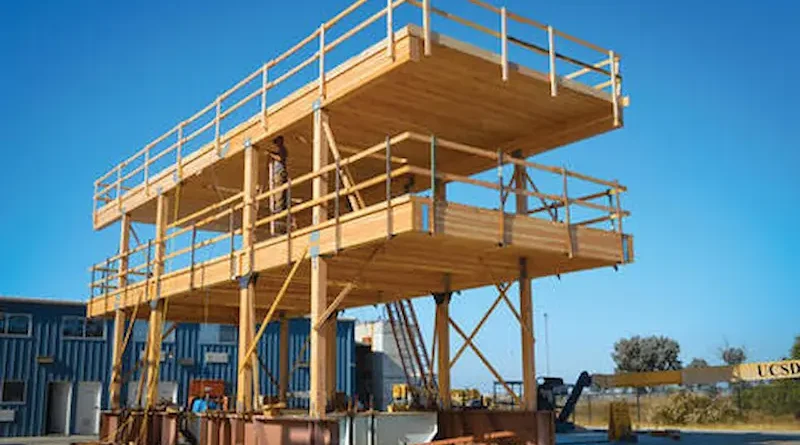The Art and Science of Masonry: Crafting Durable and Aesthetic Structures
Introduction to Masonry
Masonry is both an art and a science, a craft that melds aesthetics with structural integrity to create buildings and structures that withstand the test of time. The expertise in employing masonry has led to iconic structures that are functional and pleasing to the eye. In the contemporary context, advanced techniques, such as earthquake retrofitting, play an essential role in maintaining the safety and stability of masonry structures. Especially in regions susceptible to seismic activities, such advancements are crucial in ensuring that traditional masonry can withstand the forces of nature.
The tradition of masonry extends beyond the mere laying of bricks and stones. It encompasses understanding material science, structural physics, and the technical prowess to combine them into a harmonious unit. Involving professional masonry services is integral to achieving this balance, ensuring that every project, regardless of size, meets the necessary safety standards and design expectations.
The Historical Significance of Masonry
Masonry’s origins date back to the inception of human civilization. The Great Pyramid of Giza, the stunning Roman aqueducts, and the awe-inspiring Gothic cathedrals of medieval Europe are prime examples of masonry at its finest, showcasing the material’s ability to stand through centuries. During the medieval period, the skill of masons was highly sought after, with entire guilds and societies formed around the art. This era cemented masonry’s place as a vital architectural component, providing structural capabilities and cultural narratives embedded in stone.
The story of masonry is also the story of human progress. Each block carries the legacy of ancient knowledge, evolving as new techniques and materials become available. Meanwhile, the underlying principles of strength, balance, and beauty define today’s practice.
Types of Masonry Materials
When building with masonry, selecting the appropriate materials is essential. Traditionally, materials like brick and stone have been favored for their durability, thermal mass, and aesthetic appeal. Bricks, known for their uniformity and versatility, are used in diverse applications ranging from ornate facades to simple garden walls. On the other hand, stones present a rugged allure and unmatched durability, often chosen for projects that demand longevity and a natural appearance. Concrete blocks have become a staple in many contemporary constructions due to their strength and cost efficiency.
Understanding the properties of each material is vital for architects and builders alike. Climate, intended use, and aesthetic goals influence the choice. For more insight, explore different masonry materials, their properties, and their applications in modern construction.
Techniques and Methods in Modern Masonry
The evolution of masonry techniques reflects the industry’s quest for superior buildings – faster, safer, and more cost-effective. Traditional handcrafting methods remain valuable, yet they coexist with modern technologies like computer-aided design (CAD) and building information modeling (BIM), which enhance precision and efficiency in planning and execution. Additionally, newer bonding materials and chemical mortars have increased the speed and strength of masonry structures.
Despite the advancements, the art of masonry relies heavily on skilled craftsmanship. The placement of each brick or stone must follow meticulous design patterns, requiring the eye of a trained mason. As such, a balance between technology and traditional skills is crucial for optimal results.
Benefits of Professional Masonry Services
Professional masonry services provide critical advantages, from design consultation to execution and maintenance. Expertise in the field enhances a structure’s aesthetic and functional elements while ensuring compliance with local codes and safety standards. By leveraging their experience, professionals can troubleshoot potential issues before they arise, saving resources in the long run. Furthermore, they contribute to the aesthetic harmony of a project, aligning with the client’s vision and architectural intent.
Engaging knowledgeable professionals means investing in peace of mind, knowing your masonry project will achieve its intended purpose without sacrificing quality or safety. Professional services not only build structures; they build trust and satisfaction in every project.
Incorporating Sustainable Practices
With environmental concerns at the forefront, the masonry industry embraces sustainability by employing practices that reduce environmental impact. Techniques such as using recycled materials, opting for locally sourced inputs, and enhancing energy efficiency contribute to a greener footprint. Sustainability in masonry is about the materials and the entire lifecycle management of buildings, including energy consumption and waste management.
The move to sustainable masonry techniques enhances projects and supports international environmental goals by increasing energy efficiency and lowering operating costs. To explore more, learn about sustainability in construction, which is crucial for a responsible and resilient future.
Common Questions and Concerns
Homeowners and business operators often question masonry structures’ durability, cost, and maintenance. They wonder about the longevity of materials and what maintenance practices are necessary to preserve them. Clients frequently seek advice on selecting the right contractor to ensure quality and budget alignment.
By consulting with experienced masonry professionals, clients are guided through the decision-making process, ensuring informed choices about materials, designs, and methods that fit their needs. This proactive approach helps avoid common pitfalls and promotes the success of masonry projects.
Conclusion and Future Trends
Masonry is a time-honored craft that remains integral to modern architecture and construction. Its future is bright, supported by a blend of heritage and innovation. Incorporating cutting-edge technology and sustainable practices promises to elevate masonry to new heights, offering resilient, environmentally friendly, and aesthetically pleasing solutions.
The next evolution of masonry will likely focus on innovative materials and techniques that further enhance the durability and sustainability of constructions. This forward-thinking approach will guarantee that masonry continues to build structures and the foundations of our future built environments.

